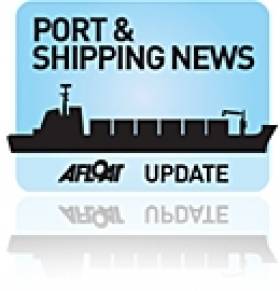Displaying items by tag: P&O Ferries
Irish Ferry Leaves as UK-Spanish Route Closes
The cruiseferry, Pride of Bilbao, owned by the Irish Continental Group (ICG) made the last return sailing on the Portsmouth-Bilbao route, when the vessel
docked at the UK port yesterday (28 September), writes Jehan Ashmore.
The service was launched in 1993 with the chartering of Pride of Bilbao. In the following year, the overnight cruiseferry, owned by Vilking Line was acquired by ICG (the parent company of Irish Ferries) and the vessel was re-registered in the Bahamas.
The vessel was placed under a British bare-boat register. The charter arrangement between P&O Ferries and ICG was extended for another five years in 2002 and again for a further three years from 2007. The final charter term remained valid up to the route closure.
Orginally the Pride of Bilbao was built for Scandinavian service as the Olympia in 1986. The newbuild was launched on Viking Line's Helsinki-Stockholm route and at the time the vessel was one of the largest overnight passenger capacity ferries in the world. At 37,583 tonnes the vessel has 2,553 passengers and space for 600 vehicles. In addition the cruiseferry has comprehensive facilities and a wide choice of cabin accommodation.
The closure of the Bilbao route is temporary as Brittany Ferries are to re-launch the route in Spring 2011. The French ferry company's existing Portsmouth - Santander route ferry, Cap Finistère will also provide two sailings weekly to Bilbao. In total the there will be five sailings weekly between the UK to Spain, two from Portsmouth to Santander and a single round-trip to Plymouth. Other vessels from the Brittany Ferries fleet will assist Cap Finistere on the three Spanish routes.
After 17 years plying the Bay of Biscay, the Pride of Bilbao is now freed-up providing new opportunities for the ICG vessel. Throughout the vessel's career
under ICG, the cruiseferry has only made a single visit to an Irish port. The ship was sub-chartered for a three-day Christmas mini-cruise to Dublin in 2004 starting and ending in Portsmouth.
























































